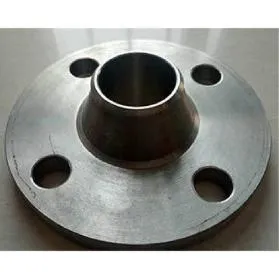-
Cangzhou Yulong Steel Co., Ltd.
-
Phone:
+86 13303177267 -
Email:
admin@ylsteelfittings.com
- English
- Arabic
- Italian
- Spanish
- Portuguese
- German
- kazakh
- Persian
- Greek
- French
- Russian
- Polish
- Thai
- Indonesian
- Vietnamese
- Zulu
- Korean
- Uzbek
- Hindi
- Serbian
- Malay
- Ukrainian
- Gujarati
- Haitian Creole
- hausa
- hawaiian
- Hebrew
- Miao
- Hungarian
- Icelandic
- igbo
- irish
- Japanese
- Javanese
- Kannada
- Khmer
- Rwandese
- Afrikaans
- Albanian
- Amharic
- Armenian
- Azerbaijani
- Basque
- Belarusian
- Bengali
- Bosnian
- Bulgarian
- Catalan
- Cebuano
- China
- China (Taiwan)
- Corsican
- Croatian
- Czech
- Danish
- Esperanto
- Estonian
- Finnish
- Frisian
- Galician
- Georgian
- Kurdish
- Kyrgyz
- Lao
- Latin
- Latvian
- Lithuanian
- Luxembourgish
- Macedonian
- Malgashi
- Malayalam
- Maltese
- Maori
- Marathi
- Mongolian
- Myanmar
- Nepali
- Norwegian
- Norwegian
- Occitan
- Pashto
- Dutch
- Punjabi
- Romanian
- Samoan
- Scottish Gaelic
- Sesotho
- Shona
- Sindhi
- Sinhala
- Slovak
- Slovenian
- Somali
- Sundanese
- Swahili
- Swedish
- Tagalog
- Tajik
- Tamil
- Tatar
- Telugu
- Turkish
- Turkmen
- Urdu
- Uighur
- Welsh
- Bantu
- Yiddish
- Yoruba

Nov . 09, 2024 08:40 Back to list
Creating a 5L GR Container for Efficient Storage Solutions
Understanding API 5L GR X60 A Comprehensive Overview
In the world of pipeline construction and the oil and gas industry, the American Petroleum Institute (API) specification is crucial for ensuring that materials used are up to standard. One of the notable specifications is API 5L, which covers seamless and welded steel line pipes for transportation of oil, gas, and water in pipelines. A key grade within this specification is X60, which has garnered attention for its mechanical properties and versatility.
What is API 5L?
API 5L is a widely recognized specification that outlines the standards for line pipe used in the petrochemical industry. It defines the various grades of steel, installation procedures, and design criteria essential for the safe and efficient transport of fluids. A significant aspect of API 5L is that it caters to different environments, including high-pressure and high-temperature applications.
The Significance of Grade X60
Grade X60 represents one of the higher strength categories within the API 5L specification. The “X” in the designation stands for the minimum yield strength of the pipe, which in this case is 60,000 psi (pounds per square inch). Due to its robust mechanical properties, X60 steel pipes are often employed in applications where strength and durability are paramount.
Chemical Composition and Properties
The chemical composition of API 5L GR X60 typically includes carbon, manganese, phosphorus, sulfur, and sometimes additional alloying elements such as chromium and nickel. The exact composition can vary depending on the producer and specific requirements, but adhering to the prescribed limits ensures the desired mechanical properties are achieved.
The mechanical properties of X60 include
- Yield Strength Minimum of 60,000 psi - Tensile Strength Minimum of 70,000 psi, making it suitable for high-pressure applications. - Elongation Generally around 20%, which indicates a good degree of ductility. This property is vital in preventing fractures or failures when the pipe is subjected to stress.
Applications of API 5L GR X60
api 5l gr x60

The applications of API 5L GR X60 are extensive, particularly in the oil and gas industry. The pipes are primarily used for transporting natural gas, crude oil, and other hazardous liquids over long distances. The durability and strength of X60 pipes make them ideal for high-stress pipeline environments, including offshore and underground installations.
In addition to oil and gas transportation, X60 pipes are also utilized in water supply systems, various construction applications, and in industries where the transportation of solid or liquid materials is required.
Fabrication and Welding Considerations
Welding is a critical process in the installation of API 5L GR X60 pipes. The material’s chemical composition can affect its weldability. It is essential to follow appropriate welding procedures and select suitable filler materials to ensure a strong and durable weld joint. Proper pre-heating and post-weld heat treatment may also be necessary to mitigate the risk of cracking, especially in thicker wall sections.
Moreover, industries often conduct non-destructive testing (NDT) on welds to ensure their integrity and compliance with safety standards.
Future Trends and Developments
With advancements in technology and materials science, there is ongoing research into improving the properties of API 5L GR X60 pipes. Innovations could focus on enhancing corrosion resistance, reducing weight while maintaining strength, or even developing smart pipeline systems with integrated monitoring technologies.
As global energy demands continue to grow, the role of API 5L GR X60 pipes will remain pivotal in ensuring efficient and safe transportation of resources. The integration of sustainable practices, such as using recycled materials or renewable energy in the manufacturing process, may also shape the future of pipeline materials.
Conclusion
API 5L GR X60 stands as a testament to the ongoing evolution of materials used in the pipeline industry. Its robust properties and versatility ensure its critical role in meeting the demands of modern energy transportation. As industries seek to balance safety, efficiency, and environmental responsibility, the advancements in specifications like API 5L will undoubtedly continue to influence the landscape of pipeline construction for years to come. Understanding and implementing these standards is essential for stakeholders in the oil, gas, and broader industrial sectors.
Latest news
-
ANSI 150P SS304 SO FLANGE
NewsFeb.14,2025
-
ASTM A333GR6 STEEL PIPE
NewsJan.20,2025
-
ANSI B16.5 WELDING NECK FLANGE
NewsJan.15,2026
-
ANSI B16.5 SLIP-ON FLANGE
NewsApr.19,2024
-
SABS 1123 FLANGE
NewsJan.15,2025
-
DIN86044 PLATE FLANGE
NewsApr.19,2024
-
DIN2527 BLIND FLANGE
NewsApr.12,2024
-
JIS B2311 Butt-Welding Fittings LR/SR 45°/90° /180°Seamless/Weld
NewsApr.23,2024











